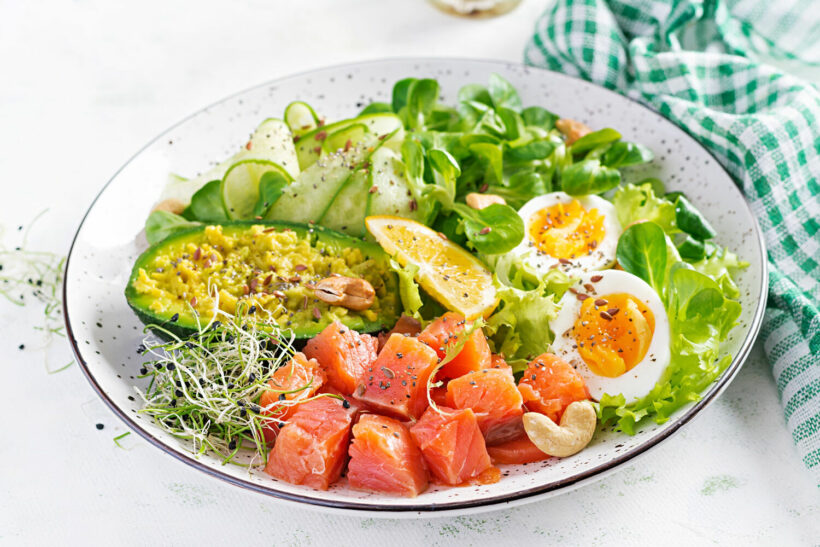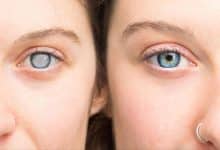Foodie Zone: Should you try Keto diet? 2022

The keto diet has taken the world by storm in the past several years. Short for “ketogenic,” the trendy diet has been promoted by celebrities, popularised in best-selling books, and marketed on social media as a cure-all. Some restaurants and companies even offer “keto-friendly” options on their menu. But what actually is the keto diet? Why do millions of people swear by it? And should you try it? Here’s what you need to know about the keto diet.
What is the Keto Diet?
Bring on the bacon! The keto diet is all about cutting carbs and eating more fat. The goal of this high-fat, low-carb diet is to significantly lower the body’s intake of carbs and switch it out with fats. This process forces your body into using different energy pathways, putting the body in a state of “ketosis.” During ketosis, your liver produces ketones, which create energy by breaking down fat as opposed to blood sugar from carbohydrates. It can provide energy for the brain, kidneys, heart, and other muscles. It usually takes around three weeks of carbohydrate deprivation for your body to reach a state of ketosis.
That’s why the keto diet emphasises eating fewer carbs and more fatty foods: Ketones are now the body’s main source of fuel instead of sugar (glucose).
Ketosis can prompt several changes in your body. It speeds up your metabolism, increases your muscle mass, and decreases your risk of heart disease and blood pressure. Moreover, ketosis may also cause your hunger to go away, meaning you’ll eat less and burn more fat stores – both lead to weight loss.
What can you eat?

The exact ratio depends on your particular needs. However, the standard keto diet usually contains 75% fat, 20% protein, and only 5% carbs. This means that you are limited to 20 to 50 grams of carbohydrates a day, making it the lowest of the low-carb diets.
Part of the reason behind the keto diet’s popularity is that you don’t have to restrict yourself to low-fat foods anymore. The diet is so filling. You can still enjoy many high-fat foods while still losing weight.
Healthy unsaturated fats, such as unprocessed nuts, avocados, seeds, olive oil, and tofu, are okay while you follow the keto diet. However, you are encouraged to consume saturated fats in high amounts, such as fats from coconut oil, butter, cocoa butter, and lard.
Most vegetables are rich in carbs, but this doesn’t mean you should avoid all kinds of vegetables. Low-carb vegetables, such as spinach, kale, broccoli, cauliflower, Brussels sprouts, mushrooms, celery, garlic, bell peppers, and cucumber, are okay. Fruits are also rich in carbs, but you may have certain fruits in small portions.
Since protein is part of the keto diet, you don’t have to cut meat, poultry, eggs, and cheese out of your life. But it’s important to avoid eating too much protein because it contains amino acids that can be converted to glucose.
Sugar, grains, beans, sugary drinks, pastries, white bread, and alcohol are all out the window. You can still drink coffee, as long as it’s unsweetened. Remember that it’s essential to avoid processed foods and eat more real, whole, fresh foods when you’re following the keto diet.
Initial side effects of the Keto Diet – The Keto Flu
The keto diet is safe for most healthy people. However, you are bound to experience some initial side effects during the first few days while your body adapts. The side effects are often called the keto flu. Some of the most common symptoms of the keto flu are constipation, headache, diarrhoea, and vomiting. Other symptoms also include sleep issues, poor energy, brain fog, and decreased exercise performance.
One way to minimise the keto flu is by starting with a regular low-carb diet for the first few weeks before transitioning to the keto diet. Using this method may help teach your body to burn more fat before you cut carbs completely out of your diet.
Since the keto diet may also change the mineral and water balance of your body, you might want to try taking mineral supplements and adding extra salt to your meals.
Who should try the Keto Diet?

The keto diet has been used to help some people with uncontrolled epilepsy, especially children, since the 1920s. Other brain-related conditions, such as autism, Parkinson’s disease, and Alzheimer’s disease, may also benefit from the keto diet. Furthermore, those with diabetes may help those with diabetes to control their blood sugar.
If you have insulin resistance, but you don’t have Type 2 diabetes, or your body mass index (BMI) is more than 40, the keto diet might be helpful for you as well. You can use it as a strategy to reset your metabolism.
Who should avoid the Keto Diet?
It’s important to keep in mind that everybody responds to the keto diet differently. Some people may be able to follow the diet and reap the benefits, while others may only experience problems. You might want to think twice about starting or continuing the keto diet if you are at risk for heart disease, under constant stress, dealing with upsetting life changes, not getting enough sleep, or taking medication. It’s also a good idea to avoid the diet if you have an eating disorder or kidney disease.
The keto diet might not be suitable for those who want to add large amounts of muscle, as well as elite athletes.
Go in with eyes wide open
If you want to try the keto diet, be sure that it is for the right reason. You also need to consider your health conditions, health goals, body type, and more. Most importantly, you should consult a healthcare provider first before trying the keto diet. A registered dietitian or a doctor will be able to create the best diet plan that works for you. They will also warn you about any unnecessary risks you might face. And if you do choose the keto diet, do lots of research to see what food you should add to your diet plan and what to avoid.
Latest Thailand News
Follow The Thaiger on Google News:


























